Fishes
Media
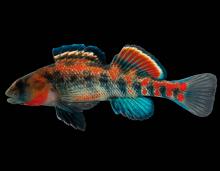
Species Types
Scientific Name
Etheostoma, Percina, Ammocrypta, and Crystallaria spp.
Description
Darters have been described as the hummingbirds of the fish world: colorful, small, and quick. Missouri has about 44 different types of darters. They are most diverse in the fast, clear, rocky streams of the Ozarks.
Media
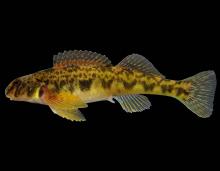
Species Types
Scientific Name
Etheostoma blennioides
Description
The greenside darter is one of our largest darters. It has olive to yellow sides and back with scattered red spots and vertical blotches often arranged in a V or W pattern. It is one of the most abundant and widespread darters in the Ozarks.
Media

Species Types
Scientific Name
Etheostoma spectabile
Description
Orangethroat darters are one of the most common darters in the Ozarks. The males are colorful during breeding season, with red blotches on the sides and bright orange under the gills.
Media
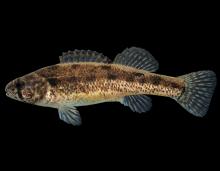
Species Types
Scientific Name
Etheostoma cragini
Description
The Arkansas darter is a small, rare perch that lives in shallow, spring branches and spring-fed creeks with sandy bottoms and mats of watercress.
Media
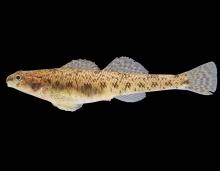
Species Types
Scientific Name
Etheostoma nigrum
Description
The Johnny darter occurs primarily in pools and slow-moving riffles in sandy streams. It's common in prairie streams of northeastern and central Missouri.
Media
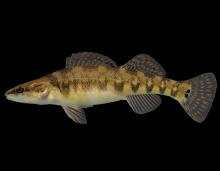
Species Types
Scientific Name
Etheostoma nianguae
Description
Two small black spots at the base of the tail fin distinguish the Niangua darter from all other darters in Missouri. Known from only a few tributaries of the Osage River, this dainty, colorful fish is a nationally threatened species.
Media
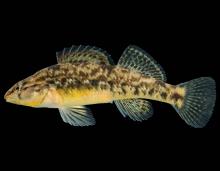
Species Types
Scientific Name
Etheostoma caeruleum
Description
The rainbow darter is a common and characteristic darter in the Ozarks. Where it occurs in our state, it is the most abundant darter in most streams of all sizes. Breeding males are brilliantly colored with reddish orange red and greenish blue.
Media
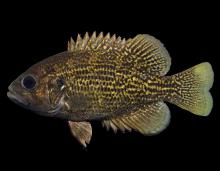
Species Types
Scientific Name
Ambloplites rupestris
Description
The northern rock bass, or goggle-eye, is thicker than most other sunfish, with a large mouth and very large eyes. It occurs in northern Ozark streams, tributaries of the middle Mississippi, and a portion of the southwestern Ozarks; sometimes in Ozark reservoirs.
Media
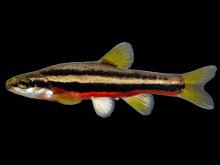
Species Types
Scientific Name
Notropis, Cyprinella, Hybognathus, Luxilus, and others
Description
Minnows — including shiners, chubs, stonerollers, dace, and carp — are members of the minnow family, the Cyprinidae. It is the largest of all fish families, and Missouri has about 70 species.
See Also


Media

Species Types
Scientific Name
Amphiuma tridactylum
Description
The three-toed amphiuma is an eel-like, completely aquatic salamander. It has very small forelimbs and hind limbs, each with three tiny toes. In Missouri it’s found only in the Bootheel region.
Media

Species Types
Scientific Name
Siren intermedia nettingi
Description
The western lesser siren is an eel-like, aquatic salamander with external gills, small eyes, small forelimbs with four toes, and no hind limbs. In Missouri, it’s found mostly in the Bootheel and northward in counties near the Mississippi River.
About Fishes in Missouri
Missouri has more than 200 kinds of fish, more than are found in most neighboring states. Fishes live in water, breathe with gills, and have fins instead of legs. Most are covered with scales. Most fish in Missouri “look” like fish and could never be confused with anything else. True, lampreys and eels have snakelike bodies — but they also have fins and smooth, slimy skin, which snakes do not.





















